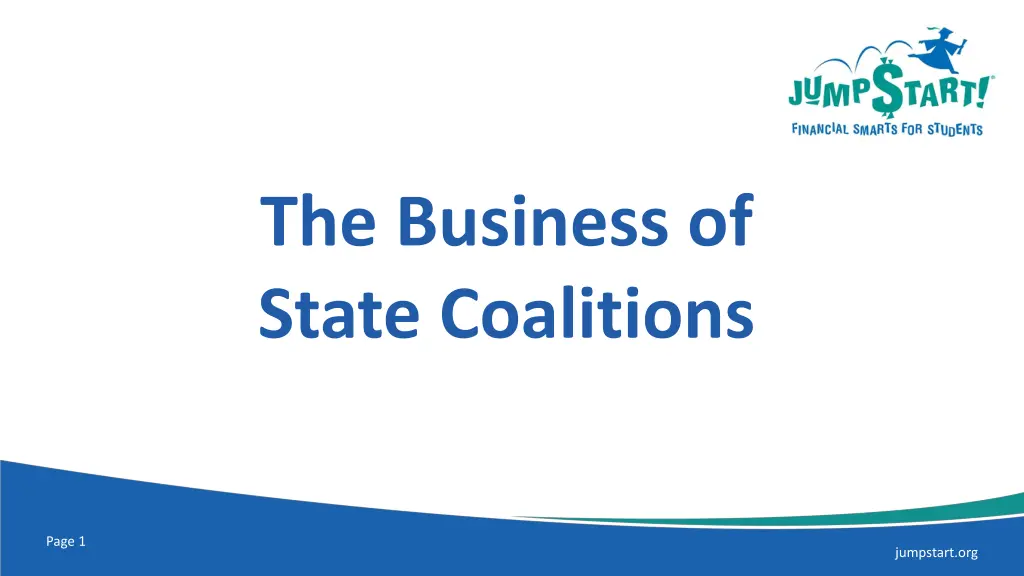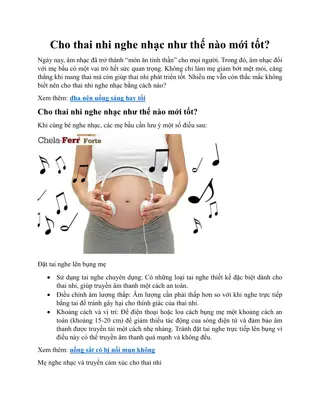
State Coalitions Business Essentials and Governance Guidelines
Dive into the key aspects of running a successful nonprofit organization, covering topics such as state coalitions, operational best practices, marketing strategies, compliance requirements, and financial management. Explore the importance of organizational essentials like bylaws, conflict of interest policies, and state filings to ensure smooth operations and legal adherence in the nonprofit sector.
Download Presentation

Please find below an Image/Link to download the presentation.
The content on the website is provided AS IS for your information and personal use only. It may not be sold, licensed, or shared on other websites without obtaining consent from the author. If you encounter any issues during the download, it is possible that the publisher has removed the file from their server.
You are allowed to download the files provided on this website for personal or commercial use, subject to the condition that they are used lawfully. All files are the property of their respective owners.
The content on the website is provided AS IS for your information and personal use only. It may not be sold, licensed, or shared on other websites without obtaining consent from the author.
E N D
Presentation Transcript
The Business of State Coalitions Page 1 jumpstart.org
Youre Running a Business! Operations Marketing Compliance Profitability Page 2 jumpstart.org
Page 3 jumpstart.org
Organizational Essentials Bylaws / Affiliation Agreements Conflict of Interest Policies 990 s State and Local Filings Money Matters Page 4 jumpstart.org
Bylaws State laws may have various requirements such as how many board members the board must have and other specifics. These are bases that must be covered. Bylaws should include the most fundamental rules only. Boards can make amendments to the bylaws as needed. Things that are apt to change are better written as policies. Nonprofits must have a dissolution clause in the bylaws according to legal requirements. Because nonprofits are required to re-invest monies back into their charities to maintain tax- exempt status, if the organization ever dissolves, there are specific rules for how they can distribute their assets. Page 5 jumpstart.org
Bylaws (cont.) Bylaws are the main governance documents for the organization. Directors should also be aware of their legal duties and responsibilities and that they can be held personally liable for not following the bylaws. The bylaws serve as a sort of handbook for nonprofit board directors. The bylaws outline how the organization will be run and serve as a guide for the board as they take actions and make decisions. When questions arise, the bylaws can be extremely helpful in preventing or resolving disagreements. Nonprofit organizations should review their bylaws at least every two years to ensure that the information they are putting on IRS Form 990 is accurate. Page 6 jumpstart.org
Conflict of Interest Policy A policy on conflicts of interest should (a) require those with a conflict (or who think they may have a conflict) to disclose the conflict / potential conflict, and (b) prohibit interested board members from voting on any matter in which there is a conflict. Beyond including those two basic directives, each nonprofit needs to determine how the board will manage the conflict. Keep in mind that the IRS Form 990 asks not only about whether the nonprofit has a written policy on conflicts of interest, but also about the process that the nonprofit uses to manage conflicts, as well as how the nonprofit determines whether board members have conflicting interests. Some state laws governing nonprofit corporations include provisions describing what must be included in a nonprofit's conflict of interest policy. Page 7 jumpstart.org
990s Most tax-exempt organizations are required to file an annual return. Which form an organization must file generally depends on its financial activity, as indicated in the chart below. The Pension Protection Act of 2006 added a new law that provides for automatic revocation of an organization's tax-exempt status if it fails to file a required annual information return for three consecutive years. User Guide for Form 990-N PDF Gross receipts normally $50,000 Note: Organizations eligible to file the e-Postcard may choose to file a full return 990-N 990-EZ PDF or 990 PDF Instructions PDF Gross receipts < $200,000, and Total assets < $500,000 990 PDF Instructions PDF Gross receipts $200,000, or Total assets $500,000 990-PF PDF Instructions PDF Private foundation - regardless of financial status Page 8 jumpstart.org
State Laws and Local Filings Each state s law is slightly different, but most require nonprofit corporations to periodically confirm or update their basic contact information, such as mailing address, the name(s) of responsible parties, and registered agent. State Coalitions should review their state laws in these areas: Bylaws and Conflict of Interest Document Retention Requirements Gaming Laws (such as raffles) Nonprofit Audit Requirements by State Law State Agencies Governing Nonprofits by State Filing requirements by state Page 9 jumpstart.org
Money Matters If we are promoting sound money management to students, your coalition needs to walk the talk. Are your bank documents (signature authority, etc.) up to date? Are you retaining financial documents and protecting the organization s information? Do you have a revenue goals and a budget? Are your 990 s and other filings up to date? Page 10 jumpstart.org
Organizational Protections Independent Financial Audits Liability Insurance Document Retention Can-Spam Photo Releases Lobbying and Campaigning Page 11 jumpstart.org
Independent Financial Audits An independent audit is an examination of the financial records, accounts, business transactions, accounting practices, and internal controls of a charitable nonprofit by an "independent" auditor. "Independent" refers to the fact that the auditor / CPA is not an employee of the nonprofits but instead is retained through a contract for services, and hence is independent. Page 12 jumpstart.org
Independent Financial Audits(cont.) Not all charitable nonprofits are required to conduct an independent audit. Circumstances that may trigger the requirement for an independent audit such as: Federal, state, and local governments may request a copy of the organization's audited financial statements. Nonprofits that expend $750,000 or more in federal funds in a year are subject to special audit requirements. Some contracts with state and local governments to provide services in the community may require the nonprofit to conduct an independent audit. Many state laws require that nonprofits submit a copy of their audited financial statements when they register with the state for charitable solicitation or fundraising purposes. Private foundations may request that a nonprofit submit a copy of the nonprofit s most recent audited financial statements in conjunction with submitting a grant proposal. Some banks may require a nonprofit to have an audit as a condition of receiving a loan. Page 13 jumpstart.org
Liability Insurance General Liability Insurance General liability insurance protects against lawsuits that arise from accidents involving visitors, constituents, or delivery people. If you hold a fundraiser or other special event, you might need this coverage to book a venue or fulfill a vendor contract. Directors & Officers (D&O) Insurance Nonprofit Directors & Officers (D&O) Liability insurance helps cover the defense costs, settlements and judgments arising out of lawsuits and wrongful act allegations brought against a nonprofit organization. An Overview Document of Both Coverages is Available in the State Leaders Toolkit Page 14 jumpstart.org
Document Retention Policy Document retention policies apply equally to documents saved in the cloud, on a server, or in a filing cabinet. If your coalition is using digital storage, make sure you have a back-up plan! While having a document retention policy gives staff the green light to toss certain documents (on a schedule, preferably), as you are creating a policy specifically for your state coalition, think about whether there are certain types of documents or specific documents that for the sake of history, or institutional memory, should be maintained permanently. State laws relating to employment vary state to state and often have implications for document retention policies. Check with the professional advisor / accounting firm that prepares your nonprofit's annual returns to the IRS and ask what documents may be needed in the event of an IRS audit, and how long to retain them. Another source for state requirements is your local state association of nonprofits. They may offer a state-specific sample document retention policy as a member-only resource. Page 15 jumpstart.org
Can-Spam The Controlling the Assault of Non-Solicited Pornography And Marketing Act of 2003, signed into law by President George W. Bush on December 16, 2003, established the United States' first national standards for the sending of commercial e-mail and requires the Federal Trade Commission to enforce its provisions. General Practices Don't use false or misleading header information. Don't use deceptive subject lines. Identify the message as a solicitation. Tell recipients where you are located. Tell recipients how to opt out of receiving future email from you. Honor opt-out requests promptly. Unified Marketing Platforms like Mailchimp or Constant Contact are good sources to provide guidance and protection from can-spam . Page 16 jumpstart.org
Photo Releases To err on the side of caution, the state coalition should get permission to photograph and use photos of any subject for both legal and ethical reasons. This whole issue of model releases falls into a gray area of First Amendment law. There are no hard and fast rules every answer to a model release question is subject to any number of caveats If you are publishing a photo for information or educational purposes, not commercial purposes like product advertising, you can typically print it without a model release. The majority of nonprofit publications fall into this category. Model releases are all about the use of the photo, not the fact that it was taken. You are also fine without a release if the person is truly unrecognizable. You are usually fine if you are not hiding the fact that you are taking photos and you are in a public place and are not breaking any laws. Page 17 jumpstart.org
Photo Releases (cont.) If you make participants sign other kinds of applications or waivers, simply add this language to those forms. Prior to the age of social media, big events like conferences were considered public and since there was no expectation of privacy, a release was generally not required from the hundreds of people at the event. A good practice now is to include the release as part of your registration form or ask people to sign it when they pick up their registration materials. The only place where release is required without question, is in the case of children under 18. A signed release must be obtained by the guardian for children under 18. When children are involved, you enter a whole new realm of law and best practices. Page 18 jumpstart.org
Lobbying and Campaigning Campaigning Under the Internal Revenue Code, all section 501(c)(3) organizations are absolutely prohibited from directly or indirectly participating in, or intervening in, any political campaign on behalf of (or in opposition to) any candidate for elective public office. Lobbying In general, according to the IRS, "no organization may qualify for section 501(c)(3) status if a substantial part of its activities is attempting to influence legislation (commonly known as lobbying). Section 501(c)3 allows for lobbying, provided the lobbying is not a substantial part of a nonprofit s overall activities. The limitations established under this rule are ambiguous, creating a level of uncertainty for those relying on it. Example: Because direct lobbying both refers to specific legislation and reflects a view on it, sending a paper to a state legislator on a general issue that does not reflect a view on specific legislation is not a direct lobbying communication. Telling your members or partners the coalition s position on legislation and asking them to contact their legislators about it IS direct lobbying. Page 19 jumpstart.org
Refer to the State Leaders Toolkit Page 20 jumpstart.org
Page 21 jumpstart.org
Page 22 jumpstart.org






















